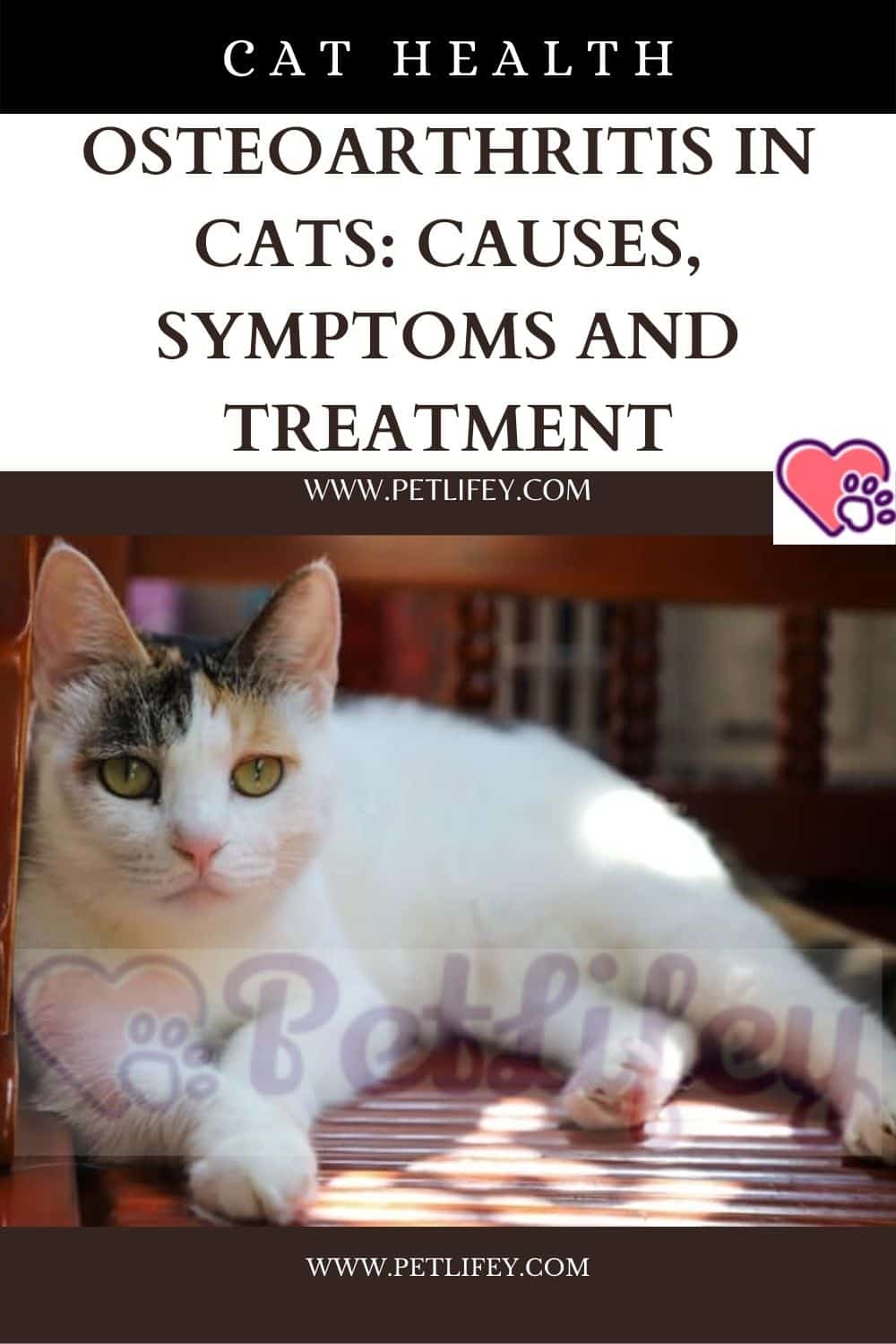Osteoarthritis in Cats: Understanding Causes, Recognizing Symptoms, and Exploring Treatment Options
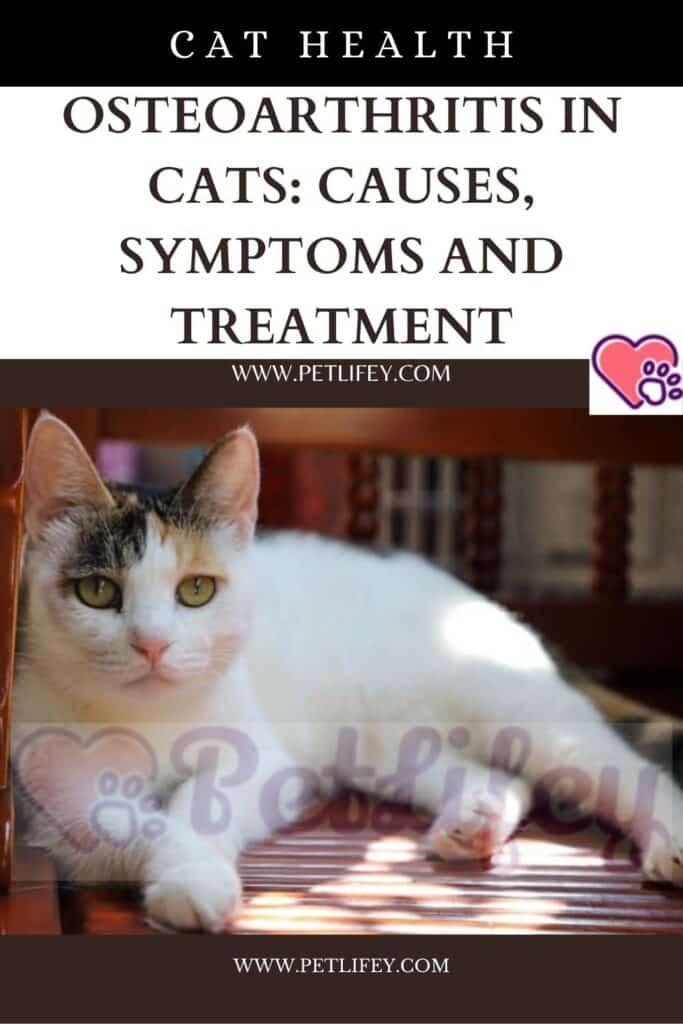
Osteoarthritis is a chronic joint condition that affects not only humans but also your feline companions. As your cat ages, it may develop this degenerative disease, which can lead to stiff and sore joints, decreased mobility, and an overall reduction in activity levels. This condition is also known as degenerative joint disease (DJD), and it occurs when the cartilage within a joint deteriorates, causing pain and limiting movement. While osteoarthritis can be a natural part of the aging process in cats, it may also arise from other underlying causes such as previous injuries or joint abnormalities.
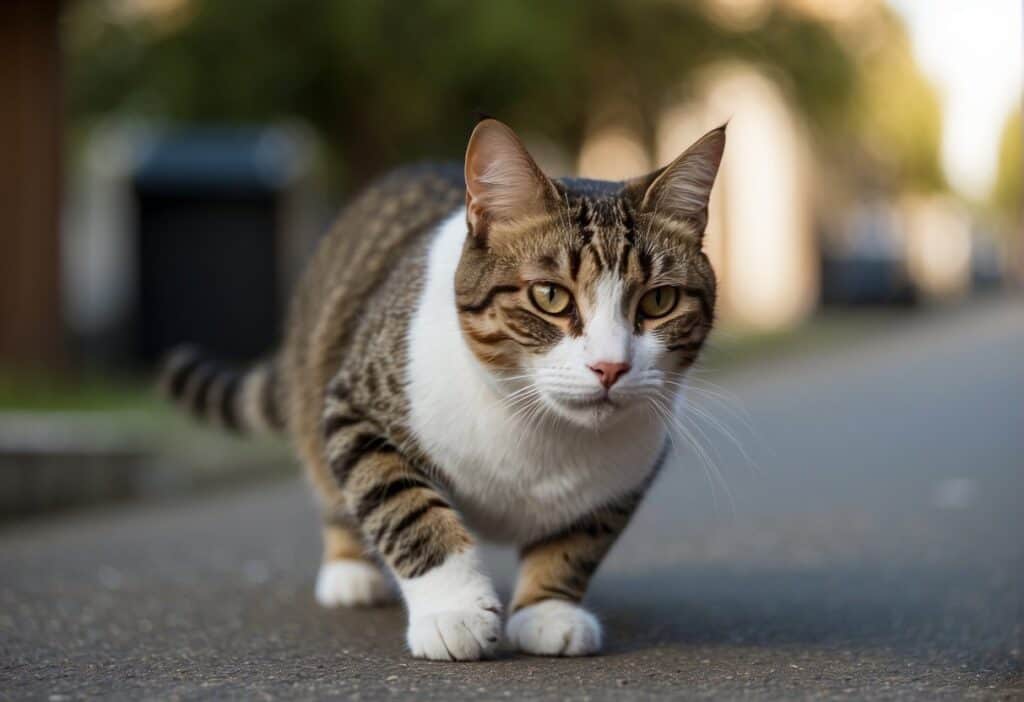
Recognizing the signs and symptoms of osteoarthritis in your cat is essential to manage their comfort and health. Cats are adept at hiding pain, so the symptoms might not be immediately apparent. However, you might notice your cat becoming less active, showing reluctance to jump or climb, or behaving differently, perhaps becoming more irritable or withdrawn. Physical indications such as weight loss, decreased grooming, and even changes in how your cat uses the litter box can hint at discomfort and should prompt a visit to the vet.
When it comes to treatment, remember that while osteoarthritis is a chronic condition with no cure, there are multiple strategies to help relieve your cat’s symptoms and enhance their quality of life. Management typically includes a combination of weight control, therapeutic exercise, pain relief medication, and, in some cases, surgery. Your veterinarian can tailor a treatment plan to suit your cat’s specific needs, helping your pet maintain a comfortable level of activity and well-being.
Understanding Osteoarthritis in Cats
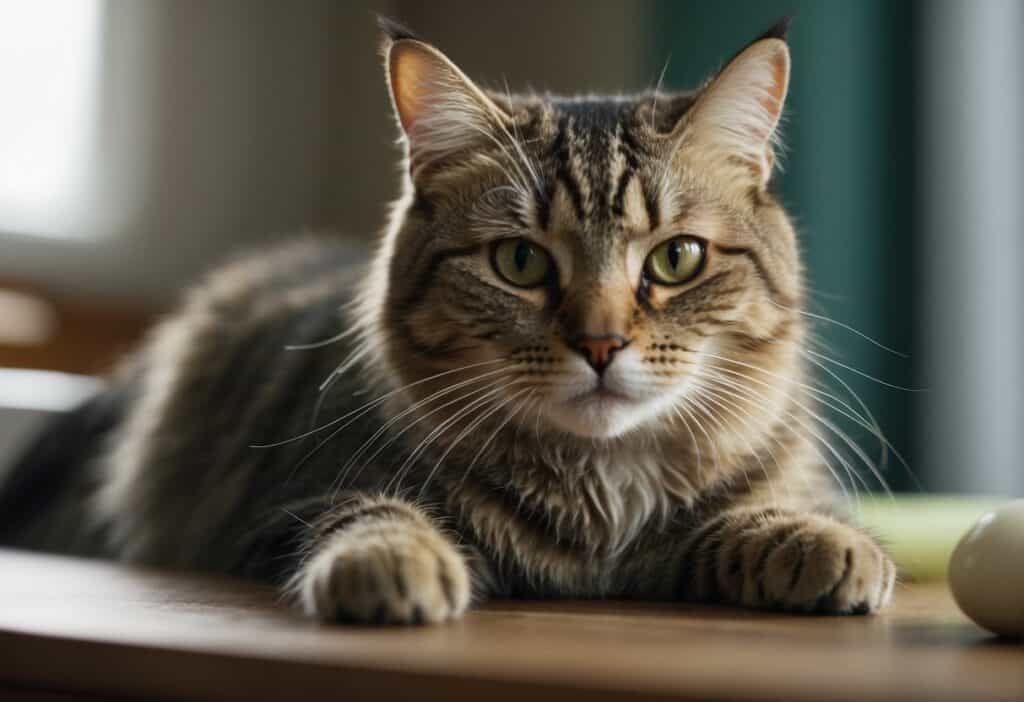
In this section, you’ll learn about what osteoarthritis is and the underlying causes that lead to this degenerative joint disease in cats. Your awareness of the disease can aid in early detection and effective management.
Defining Osteoarthritis
Osteoarthritis (OA), also known as degenerative joint disease (DJD), is a progressive and chronic condition affecting your cat’s joints. It involves the deterioration of cartilage, which is the protective cushioning between the bones. This breakdown leads to inflammation, joint pain, and reduced mobility. In cats, it can often go unnoticed until the condition has significantly progressed due to their sedentary nature and high pain tolerance.
Causes of Osteoarthritis
The development of osteoarthritis in your cat can stem from a variety of factors:
- Age: Just as with humans, the wear and tear on joints accumulate over time, making older cats more susceptible.
- Trauma: Previous injuries can lead to joint abnormalities and OA.
- Obesity: Excess weight puts additional strain on the joints.
- Genetics: Certain breeds, such as the Maine Coon, Persian, and Scottish Fold, are predisposed to joint conditions like hip dysplasia, which can lead to OA.
- Joint Abnormalities: Conditions like hip dysplasia can contribute to the development of OA, as the abnormal joint structures undergo more wear and tear.
Recognizing these causes can help you minimize the risk factors and understand how this condition may affect your cat’s health and well-being.
Diagnosing Osteoarthritis in Cats
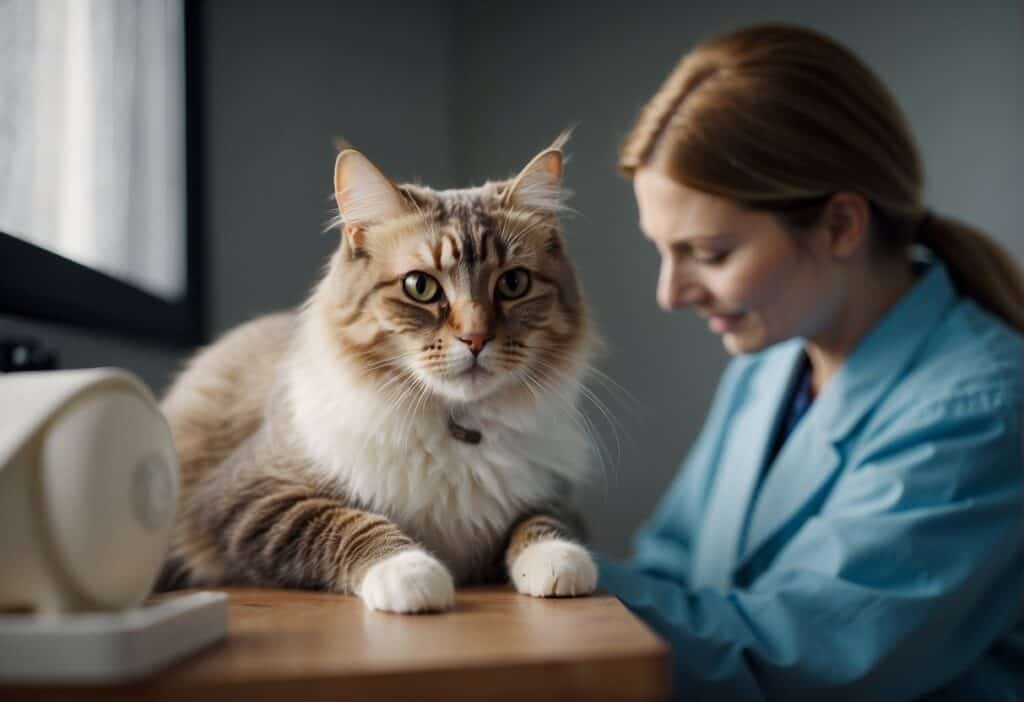
When your cat starts showing signs of discomfort, a visit to the veterinarian is essential to accurately identify if osteoarthritis is the cause. Your vet will use a combination of clinical signs and advanced diagnostic tools to make a diagnosis.
Veterinary Examination
Physical Exam: Your veterinarian will begin with a comprehensive physical examination to check for signs of pain, limping, or lameness, which are indicative of arthritis in cats. They will observe your cat’s gait, check for discomfort during joint manipulation, and note any reluctance to jump or other changes in normal activities.
- Clinical Signs: Look for changes in behavior such as irritability or alterations in grooming habits which might suggest discomfort.
- Detailed History: A thorough history is crucial, including any instances of limping or difficulty in movement that you may have noticed.
Advanced Diagnostics
Imaging: Following the initial exam, your vet might suggest imaging tests such as X-rays (radiographs) to visualize the bones and joints. These can show joint space narrowing, changes in bone density, and other physical abnormalities within the joints.
- Radiographs: X-rays are often the first imaging tool used. However, they may not always show early arthritis signs.
Further Testing: For a more detailed look, advanced diagnostic methods may be employed:
- Joint Fluid Analysis: To check for inflammation and rule out other diseases.
- Blood Tests: Although not specific for detecting osteoarthritis, they can rule out other conditions that may cause similar clinical signs.
- Ultrasound & MRI: These can help assess the soft tissues and the condition of joints in more detail, which might not be as apparent on X-rays.
It is important to trust your veterinarian’s guidance, as they can combine these diagnostic tools with their clinical expertise to diagnose the presence and extent of osteoarthritis in your cat.
Symptoms of Osteoarthritis in Cats
Recognizing the symptoms of osteoarthritis in your cat is crucial for early intervention and management of the condition. Paying attention to changes in mobility and behavior can provide important clues to your cat’s joint health.
Identifying Pain and Discomfort
Your cat may not show overt signs of pain, but there are subtle indicators. Lameness or limping, particularly after resting, can be seen when your cat experiences discomfort. Check for stiffness in the legs and a reluctance to leap onto higher surfaces, which are signs of possible joint pain. If you notice any swelling around the joints or your cat showing signs of pain when specific areas are touched, these could be signs of inflammation and painful joints.
Changes in Behavior
Behavioral changes are often the first sign you may notice if your cat has osteoarthritis. A decrease in grooming due to pain or stiffness can lead to an unkempt appearance. You may also observe difficulty with accessing the litter box, changes in mobility, or an increase in hiding or irritability. These behaviors often point towards an underlying issue such as arthritis, requiring careful attention and possibly adjustments in your cat’s environment to make daily activities less painful.
Treatment Options for Osteoarthritis
Managing osteoarthritis in cats involves treatments aimed at reducing pain, maintaining mobility, and enhancing quality of life. Your approach can include medications, dietary adjustments, physical therapies, and sometimes surgery.
Medication and Supplements
Your veterinarian may prescribe Non-Steroidal Anti-Inflammatory Drugs (NSAIDs) to control inflammation and pain. It’s important to use only those approved for cats, as some human NSAIDs can be toxic to them. Gabapentin and Tramadol are medications that can help manage pain.
For joint health support, supplements such as glucosamine and chondroitin may be recommended, as well as omega-3 fatty acids, which have anti-inflammatory properties. An injectable option like Adequan can also be useful in supporting joint health.
Lifestyle and Home Remedies
Maintaining a healthy weight is crucial; weight loss for overweight cats can significantly reduce stress on affected joints. Partnering with your vet to develop a tailored diet and exercise routine will help your cat achieve a healthy weight.
Your home environment can be adapted to improve your cat’s comfort. Provide soft bedding, and consider using ramps or stairs to help your cat reach higher places without jumping.
Rehabilitative Therapies
Physical Therapy and Rehabilitation can maintain joint movement and muscle strength, which are vital for mobility. Hydrotherapy and massage can improve circulation and flexibility.
Cold Laser Therapy is a non-invasive option that can reduce pain and improve healing. Likewise, acupuncture may offer pain relief and can be a complementary treatment with traditional medications.
Surgical Treatments
For severe cases, surgical options may exist such as joint replacement or hip surgery. Surgery is typically considered when other treatment methods have not yielded adequate improvements in your cat’s quality of life and mobility.
Preventing Osteoarthritis
To mitigate the risk of your cat developing osteoarthritis, focus on maintaining its ideal weight and ensuring consistent veterinary oversight. This proactive approach can significantly contribute to the long-term joint health of your feline friend.
Weight and Exercise Management
Maintaining a healthy weight is crucial in preventing stress on your cat’s joints. Obesity can lead to the development or worsening of osteoarthritis due to the excessive load on joint structures.
- Diet: Feed your cat a balanced diet appropriate for their life stage and health status.
- Exercise: Encourage regular play and activity. Design an exercise regimen that fits your cat’s age and physical ability.
Utilizing mobility aids like ramps or steps can help your overweight cat still access their favorite spots without the added stress on their joints.
Regular Veterinary Care
Routine vet check-ups are vital for early detection of joint problems. Veterinarians can assess your cat’s weight and provide guidance on weight management strategies.
- Early Detection: Yearly examinations can spot the early signs of joint wear.
- Prevention Measures: Your veterinarian can recommend specific preventive strategies tailored to your cat’s need.
By engaging in these preventative care methods, you can play a vital role in the long-term joint health and mobility of your cat.
Living with Osteoarthritis in Cats
When your cat is diagnosed with osteoarthritis, proper daily care and management become essential to support their quality of life. Adjusting your home and routine can greatly help in reducing their discomfort and promoting mobility.
Daily Care and Management
For effective daily management of osteoarthritis in cats, pain management is a top priority. Consistent medication may be necessary, prescribed by your vet, which could include anti-inflammatory drugs to reduce joint pain. It’s important to develop a routine that includes:
- Regular exercise: Gentle activities tailored to your cat’s ability. Avoid overexertion to prevent joint strain.
- Warm and cool compresses: Apply to affected joints to soothe discomfort.
- Weight management: Maintain a healthy weight through a balanced diet to reduce stress on their joints.
- Mobility aids: Provide ramps or steps to help them access their favorite spots without jumping.
Integrating these into your cat’s daily routine can help to maintain mobility and prevent further joint damage.
Supporting Your Cat’s Quality of Life
Beyond physical care, your cat’s emotional well-being is also crucial. Here are ways you can support their quality of life:
- Environmental modifications: Create a comfortable living space with easy access to all essentials—food, water, litter box—without the need to climb or jump.
- Soft bedding: Offer plush, supportive beds in quiet areas where your cat can rest without feeling isolated.
- Physical support: Senior cats might need help with grooming or getting around. Be patient and assist when necessary.
- Emotional support: Spend quality time with your cat to boost their spirits. Gentle petting or simply being near can be comforting.
By addressing both their physical and emotional needs, you contribute to a nurturing environment that helps your senior cat cope with the challenges of osteoarthritis.
Conclusion
Osteoarthritis in cats is a chronic degenerative disease affecting joints, which can significantly impact your cat’s quality of life. Although there is no vaccine for this condition, a variety of treatment options are available to manage the disease and maintain mobility. These strategies may include:
- Medication: Anti-inflammatory and pain medication.
- Physical Therapy: Aids in maintaining joint function.
- Lifestyle Changes: Weight management through diet and controlled exercise.
- Alternative Therapies: Acupuncture and therapeutic laser treatments.
- Surgical Options: Arthroscopy or joint replacement in severe cases.
It’s crucial to observe your feline friend for subtle signs of discomfort or changes in behavior which may suggest the onset of arthritis. Early detection and a comprehensive care approach ensure the best management of osteoarthritis.
Future research continues to focus on improving diagnostics and treatments for feline osteoarthritis, with trends leaning towards innovative and less invasive options to enhance your cat’s well-being.
Remember, with your attention and care, along with veterinary support, you can help manage this condition and provide a comfortable life for your cat.

